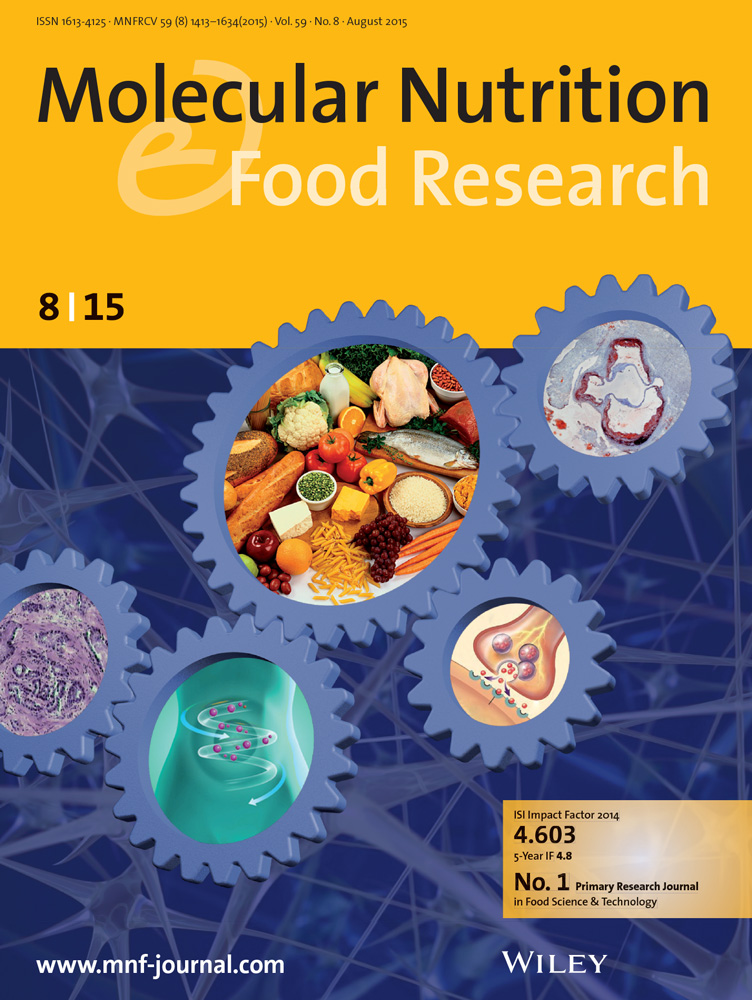Antidepressant-Like Effect of Saffron (Crocus sativus L.) in Mice Exposed to Chronic Unpredictable Mild Stress via Attenuating Neuroinflammation and Recovering Neuroplasticity.
IF 4.2
2区 农林科学
Q1 FOOD SCIENCE & TECHNOLOGY
引用次数: 0
Abstract
Saffron (Crocus sativus L.), a traditional food coloring and flavoring ingredient, has shown potential antidepressant activity in several preclinical and clinical studies. This study investigated the antidepressant effect and underlying mechanism of saffron extract (SE) using a chronic unpredictable mild stress (CUMS)-induced depressive mouse model. Mice subjected to 8-week CUMS were orally administered with SE or positive medicine fluoxetine for 6 weeks. Behavioral tests, histopathological analysis, proinflammatory cytokine levels, and protein/mRNA expression were evaluated to characterize the antidepressant effects of SE. Results showed SE improved depression-like behaviors, ameliorated hippocampal and neuronal damage, remitted neuroinflammation, and restored neuroplasticity in mice. The antineuroinflammatory effect of SE may be attributed to inhibition of microglial activation, NF-κB signaling pathway, and proinflammatory cytokines' secretion. In addition, the upregulation of hippocampal Creb, Bdnf, and Trkb, and related proteins by SE treatment may be a mechanism for neuroplasticity recovery. These results demonstrated the antidepressant effects of SE in a CUMS-induced depressive model and manifested the potential of saffron as a functional food for relieving depression.藏红花(Crocus sativus L.)通过减轻神经炎症和恢复神经可塑性对慢性不可预测轻度应激小鼠的抗抑郁样作用。
藏红花(Crocus sativus L.)是一种传统的食用色素和调味成分,在一些临床前和临床研究中显示出潜在的抗抑郁活性。采用慢性不可预测轻度应激(CUMS)诱导的抑郁小鼠模型,研究藏红花提取物(SE)的抗抑郁作用及其机制。在8周的CUMS中,小鼠口服SE或阳性药物氟西汀6周。评估行为测试、组织病理学分析、促炎细胞因子水平和蛋白/mRNA表达,以表征SE的抗抑郁作用。结果显示,SE改善小鼠抑郁样行为,改善海马和神经元损伤,减轻神经炎症,恢复神经可塑性。SE的抗神经炎作用可能与抑制小胶质细胞活化、NF-κB信号通路和促炎细胞因子的分泌有关。此外,SE处理对海马Creb、Bdnf、Trkb及相关蛋白的上调可能是神经可塑性恢复的机制之一。上述结果证实了SE在coms诱导的抑郁模型中的抗抑郁作用,同时也证明了藏红花作为一种功能性抑郁食品的潜力。
本文章由计算机程序翻译,如有差异,请以英文原文为准。
求助全文
约1分钟内获得全文
求助全文
来源期刊

Molecular Nutrition & Food Research
工程技术-食品科技
CiteScore
8.70
自引率
1.90%
发文量
250
审稿时长
1.7 months
期刊介绍:
Molecular Nutrition & Food Research is a primary research journal devoted to health, safety and all aspects of molecular nutrition such as nutritional biochemistry, nutrigenomics and metabolomics aiming to link the information arising from related disciplines:
Bioactivity: Nutritional and medical effects of food constituents including bioavailability and kinetics.
Immunology: Understanding the interactions of food and the immune system.
Microbiology: Food spoilage, food pathogens, chemical and physical approaches of fermented foods and novel microbial processes.
Chemistry: Isolation and analysis of bioactive food ingredients while considering environmental aspects.
 求助内容:
求助内容: 应助结果提醒方式:
应助结果提醒方式:


